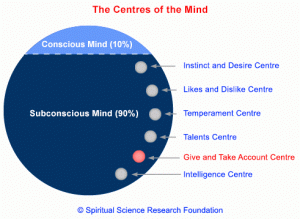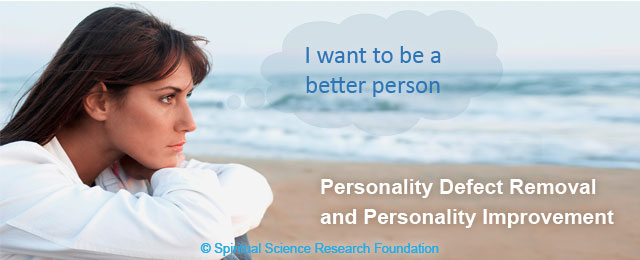How to Achieve my New Year’s Resolution goals? By practicing PDR
1. Achieving the New Year’s resolution
Out with the old, in with the new. New Year is the period of year when we pause to reflect on the year that has come and gone and we assess the changes we would like to implement in our lives to better ourselves.
A New Year’s resolution is a tradition in many countries in which a person makes a promise to himself/herself to do an act of self-improvement from the first day of the new year. These improvements can be learning a new language, being physically fit or doing something nice, such as being more friendly to neighbours.
Many of us strive to improve ourselves in this way with each new year, but unfortunately very few actually follow through with each year’s resolutions. A study has shown that 1 in 3 people abandon their resolutions by the end of January, and 73% give up before achieving their goal.
Here are the top ten commonly broken New Year’s resolutions:
- Lose Weight or Get Fit
- Quit Smoking
- Learn Something New
- Be Less Stressed
- Eat Healthier or improve the Diet
- Spend More Time with Family
- Save Money or Get Out of Debt
- Travel to New Places
- Volunteer at a Non-profit Organisation
- Drink Less Alcohol
This list is just a sampling of the many ways that people want to improve and these are valid and good improvements. So why then is it not possible to accomplish them? If we start off the year resolute and motivated to make these changes, with the dominant thought in the mind being ‘I will accomplish my resolution’ why then do we not follow through with our plans?
2. Why are New Year’s resolutions usually not achieved?
Before going to the solution which can give us success in achieving our resolution, it is important first to understand what is the actual obstacle in this process. Unless and until we work on the root cause of the problem, achieving our resolution will be very difficult. In order to understand this, we should first analyze how the mind works.
Our mind is made up of two parts: Conscious mind and Subconscious mind. The conscious mind is the aware part of ourselves, and the Subconscious mind is the part that we are not aware of. It is the subconscious mind which contains numerous impressions in terms of desires, centers of likes and dislikes, as well as our temperament made up of personality defects and qualities. These impressions generate impulses in terms of thousands of thoughts that enter our conscious mind repetitively and at a very fast speed.
We generally try to deal with some of these impulses and control them, but in many cases we just follow the impulses and act on them. The simple reason for this is that the conscious mind represents 10% of our mind and the subconscious mind represents the other 90%. Basically our subconscious mind is 9 times more powerful than our conscious mind, and hence very difficult to control. So even though we wish to change our behaviors it is usually not possible.
3. Root cause of failed resolutions: Personality defects in the mind
Out of these various impressions in the subconscious mind, it is actually the personality defects, like laziness, impulsiveness, greed, selfishness, pride, anger, etc, which are the root cause of the problem. They are the culprit for not achieving resolutions, and obstructing our process of self-improvement. In reality the self-improvement automatically comes when these personality defects are removed and qualities are instilled in their place!
Let us take a closer look practically at some of these commonly broken New Year’s resolutions and examine scenarios and how personality defects played a role:
New Year’s Resolution example 1
Get in shape and lose weight
Scenario: Tom has planned to wake up an hour earlier before work to go for a run and to eat only fresh fruits and veggies. When the alarm rings in the morning, instead of getting up and changing into his running attire he snoozes the alarm clock for a whole hour and ends up having no more time to exercise. After getting up from the bed he goes to the kitchen, opens the fridge and sees his favorite cake. His desires in the mind increase a lot, he cannot resist it and eats 2 big pieces. Afterwards he feels bad, and thinks that he is weak minded, that he can never accomplish anything, and quickly gives up on his resolution.
Root cause of the problem: Laziness, Gluttony, Undisciplined, Inferiority complex
New Year’s Resolution example 2
Be Less Stressed
Scenario: Cindy, a lawyer in a top firm wants to be less stressed about work. Whenever she begins work for a new client, she constantly thinks about the proposal after work hours and deep into the night, analysing whether she can do things in a better way or a different way. She starts thinking that she did not do it perfectly and hence things will go in a bad way. For the next few hours she can’t sleep and is worrying what will happen. The mind is portraying various negative scenarios, such as losing the client, losing the job, etc keeping her further in stress.
Root cause of the problem: Excessive thinking, Over-Analysing, Worrying nature, Negative thinking
These are just a couple of examples to see how our personality defects can surreptitiously affect many areas of our lives. They can cause us to not follow through with our plans and goals, making us feel upset or down.
All of us make mistakes, continuing negative behavior patterns which we regret. These mistakes we make are a result of our personality defects surfacing at various points of the day, leading us to carry out an incorrect action or reaction.
4. So how do I overcome these problems and follow through with my resolutions?
There is some good news: it is definitely possible to achieve our resolutions! The solution, or we can say the antidote for the personality defects, is the practice of Personality defect removal. This unique process of self-improvement is extremely efficient in first making us aware of our personality defects, and then helping us fight them until they are reduced and finally completely removed.
It leads us to a liberating feeling of freeing ourselves from the various habits that have been bothering us for so many years and which have taken us away from our personal resolutions, goals and dreams.
The video below reveals this method to permanently help us to remove our personality defects which will in turn help us to lead more blissful lives.
An Introduction to Personality Defect Removal Process
Wishing you all success with this process and achievement of your resolutions!
Warm regards,
SSRF



Recent Comments